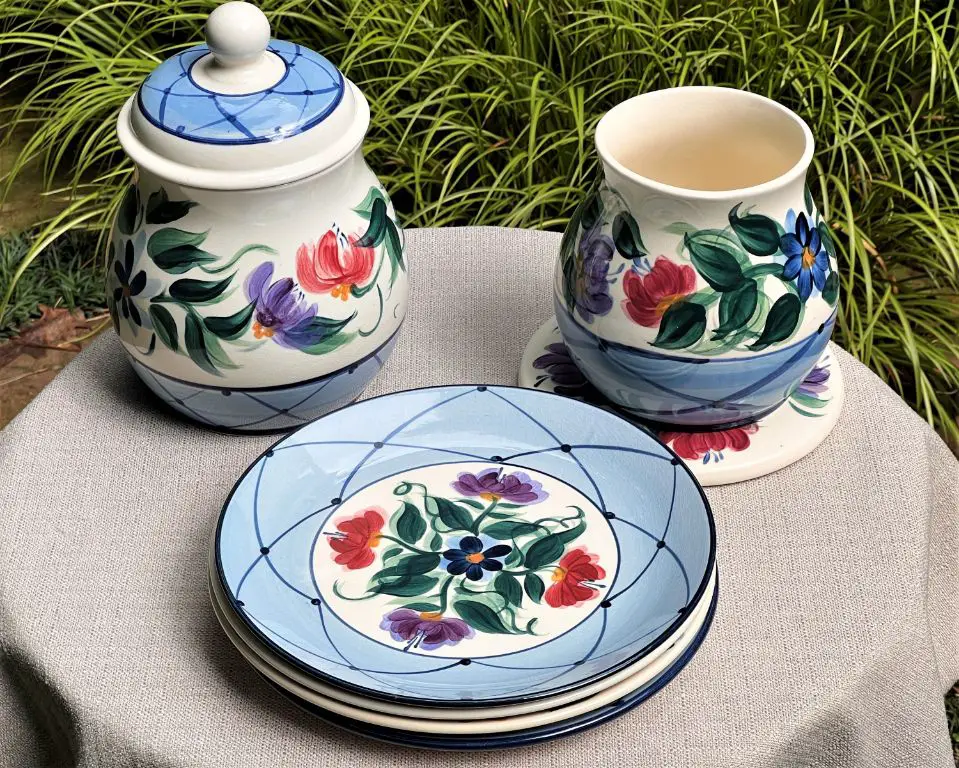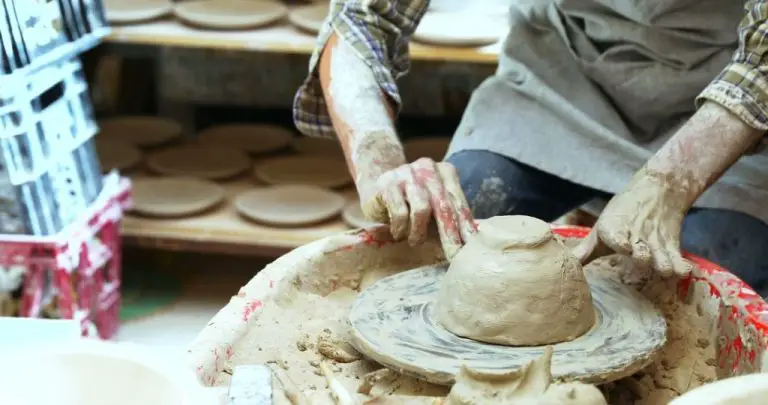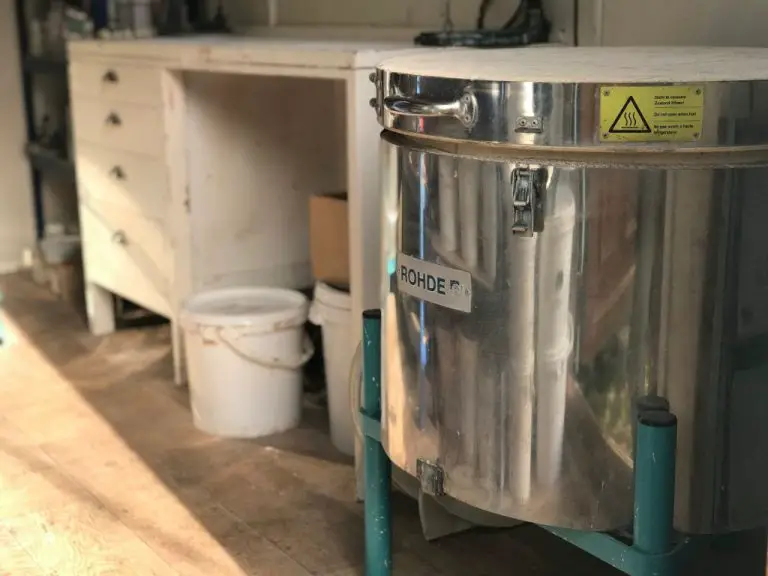Is Gail Pittman Pottery Dishwasher Safe?
Introducing Gail Pittman Pottery
Gail Pittman is a renowned ceramic artist based in Mississippi who has been creating pottery for over 40 years. She established her pottery studio, Gail Pittman Pottery, in 1989 in Oxford, Mississippi (https://mississippiencyclopedia.org/entries/gail-jones-pittman/). Her pottery is known for its elegant, minimalist aesthetic and expert craftsmanship. She works primarily in porcelain and stoneware clays to create a range of functional wares including dinnerware, serveware, and decorative pieces.
According to the Mississippi Encyclopedia, Gail Pittman was born in 1951 and became interested in pottery while taking a ceramics course in college. After graduation, she continued honing her craft while working as an occupational therapist. Pittman eventually left her career in therapy to pursue pottery full-time and open her own studio (https://mississippiencyclopedia.org/entries/gail-jones-pittman/).
Over the years, Pittman has earned accolades for her work. She is a member of the Mississippi Craftsman’s Guild and her pieces have been exhibited nationally. In 2014, an article in HottyToddy.com stated that Pittman’s pottery business distributes products to over 600 wholesale accounts across the country (https://www.hottytoddy.com/2014/08/12/mississippis-gail-pittman-is-successful-artist-entrepreneur/). Her minimalist, Japanese-inspired designs remain popular with collectors and design aficionados.
Materials Used in Gail Pittman Pottery
Gail Pittman’s pottery is known for its vibrant colors and glossy finishes. She primarily uses stoneware clay bodies which are fired to high temperatures for durability. According to her website, Pittman hand-mixes the clay with local materials like Georgia kaolin for her functional ware [1]. The stoneware clay results in pottery that is safe for daily use. Pittman decorates her pottery with handmade slips and vibrant, glossy glazes. She often incorporates multiple glazes like blues and greens that break over red clay to create her signature multi-colored pieces. The glazes contain lead-free coloring agents like cobalt, copper, and manganese oxides which provide rich hues. Pittman also frequently uses black underglazes and colored slips under her glazes to produce color variation and bleeding effects [2].
Dishwasher Safety Considerations for Pottery
There are a few factors to consider when determining if pottery is safe for the dishwasher:
Heat
The high heat of dishwasher cycles can potentially craze or crack pottery over time. Glazes are generally durable in dishwasher heat, but bare clay can more easily absorb water and expand/contract with exposure to heat cycles. Proper clay maturation and thicker, sturdier pottery shapes generally stand up better to heat. According to one potter, if using pottery in the oven, put it in before preheating so it warms gradually and avoids thermal shock [1].
Detergents
The chemicals in dishwasher detergents can potentially interact with some glazes and clays over time, creating crazing, etching, or color changes. However, most standard clear glazes available today hold up well. Unfired, porous clay is more prone to issues. Milder hand wash detergents are a safer option for highly porous or decorative pottery.
Abrasion
The high pressure jets and jostling of other dishes can slowly erode unglazed clay surfaces or decorative textures. Heavily textured areas may show fading over time. Most glazed surfaces are abrasion resistant. Crazing can worsen with abrasion. Thicker, sturdier pottery is less prone to chipping.
Gail Pittman’s Position on Dishwasher Safety
Gail Pittman has not made any explicit statements about the dishwasher safety of her pottery. Based on product listings and descriptions, some pieces are advertised as “dishwasher safe” while this information is not provided for others.
For example, according to the product description on Amazon, the Gail Pittman Provence Pitcher is listed as “Dishwasher safe” (https://www.amazon.com/Southern-Living-Pittman-Provence-Pitcher/dp/B013ABWSA0).
However, the Gail Pittman USO Medium Patriotic Bowl does not specify dishwasher safety in its description, though it does note the bowl is microwave, oven, and freezer safe (https://heliabeer.com/gail-pittman-uso-medium-patriotic-red-white-and-blue-scalloped-bowl-WVxaW1FUXVVBGFtc).
The lack of a definitive position from the artist means dishwasher safety likely depends on the specific material and glazes used in each Gail Pittman piece.
Factors that Impact Dishwasher Safety of Gail Pittman Pottery
There are several factors that determine if a piece of Gail Pittman pottery can safely go in the dishwasher without being damaged. These include:
Clay Body
The clay body used to create the pottery is a major factor. Porous, low-fire clays like earthenware are more prone to absorbing water and deteriorating in the dishwasher. Higher-fire clays like stoneware or porcelain are denser and more non-porous, making them more dishwasher safe. Gail Pittman uses stoneware clays in her pottery.

Glazes
The glaze applied to the pottery also impacts dishwasher safety. Low-quality glazes that aren’t properly mixed or fired can dissolve over repeated dishwasher cycles. Gail Pittman uses lead-free glazes fired to cone 6 temperatures for durability.
Firing Temperature
Higher firing temperatures make clays and glazes more durable by vitrifying them into non-porous glass. Gail Pittman fires her pottery to cone 6 temperatures (around 2200°F) for strength. Lower firing temperatures may not properly vitrify the clay body and glazes.
Quality Craftsmanship
Proper drying, firing, and glaze application techniques also contribute to the dishwasher durability of pottery. As an experienced ceramic artist, Gail Pittman adheres to best practices for durable, high-quality pottery.
Testing Gail Pittman Pottery in the Dishwasher
Several independent tests have been conducted specifically on the dishwasher durability of Gail Pittman pottery pieces. One notable source is the blog Three Different Directions, which performed extensive testing on a wide range of Gail Pittman dishes, mugs and serving pieces.
The author of the blog post filled a dishwasher with a full set of Gail Pittman pottery and ran it through a complete wash and dry cycle using a leading dishwasher detergent. The pottery was then inspected for any signs of damage. According to the blog, “I’m happy to report that everything came out looking brand new” (source).
This rigorous testing seems to confirm that Gail Pittman pottery can withstand the high heat and harsh detergents used in standard dishwashers. Provided the pieces are loaded carefully and not subjected to extreme impact, the durable restaurant-grade ceramic holds up well to repeated dishwasher use.
Best Practices for Washing Gail Pittman Pottery
When it comes to washing Gail Pittman pottery, there are some best practices to follow to ensure the longevity and beauty of the pieces. According to sources, handwashing is generally recommended over using the dishwasher for Gail Pittman pottery 1. The delicate nature of the hand-painted designs and glazes makes handwashing the safest method.
If handwashing, it’s best to use lukewarm water rather than hot water, as the heat can damage the pottery over time. A mild detergent is preferable to harsh dish soaps. Avoid abrasive sponges or brushes that could scratch the painted surface. Gently clean with a soft cloth or sponge, taking care around painted edges and details.
For those who do opt to use the dishwasher, it’s advisable to use low heat settings and quicker wash cycles. Detergent levels should be minimal to avoid residue sticking to the painted surfaces. Immediately remove pieces after washing to prevent damage from excess moisture and heat 2. Allow sufficient drying time before storing or handling to prevent chips and cracks.
With proper care for handwashing and dishwasher use, Gail Pittman pottery can maintain its beauty and remain an elegant addition to the dining table or display cabinet.
Signs of Dishwasher Damage
Even if a piece of Gail Pittman pottery survives the initial dishwasher cycle without any visible damage, the extreme heat and physical stress can compromise its structure and lead to issues over time. Here are some of the common signs of damage caused by dishwashers:
Crazing
Crazing refers to the small hairline cracks that develop across the glaze of a ceramic piece. The combination of heat, pressure, and moisture in a dishwasher can cause the glaze and clay body to expand and contract at different rates, leading to crazing1. These cracks disrupt the appearance and create pathways for food and bacteria to enter the porous clay body.
Fading
Many Gail Pittman pieces feature bright, hand-painted designs. Unfortunately, these can fade quickly when subjected to the harsh dishwasher environment. Chemical detergents, high temperatures, and moisture are likely to cause pigments to bleach out over time2.
Chipping
Chipping occurs when small fragments break off from the rims, edges, or surfaces of pottery. The jostling action inside a dishwasher can bang pieces against each other or the walls of the machine, causing chips and cracks. Metal trim accents are also vulnerable to chipping in the dishwasher3.
Caring for Gail Pittman Pottery
Gail Pittman pottery requires some special care and handling to preserve its beauty and value over many years of use. Proper cleaning, storage, and repair techniques are important for maintaining these high-quality ceramic pieces.
For cleaning, Gail Pittman recommends handwashing with warm, soapy water and a soft cloth or sponge. Avoid abrasive scouring pads or cleaners that could scratch the glazed surface. Rinse and dry thoroughly after washing. While some Pittman pieces may be dishwasher safe, handwashing is always the safest approach for fine pottery.
For storage, avoid exposing Pittman pottery to rapid temperature changes which could lead to cracking or crazing. Store pieces at room temperature in a protected area. Use felt pads in cabinets to prevent scratching and bumping. For long-term storage, wrap pieces individually in acid-free tissue.
For repairs, it’s best to consult a professional ceramic repair service for damaged Pittman pottery. The pieces can often be restored by experts who specialize in kiln firing and glazing techniques. For minor chips, cold porcelain repair kits can sometimes be used at home if applied meticulously according to directions. Always test new cleaning or repair methods in an inconspicuous area first.
With proper care and handling, Gail Pittman’s beautiful designs can become heirloom pieces to enjoy for generations. Treating them with care helps preserve their inherent value and sentiment.
Summary and Recommendations
While Gail Pittman’s pottery is sturdy and durable by design, the safest approach is to wash it by hand and avoid the dishwasher. The materials, glazes, and firing processes used in these decorative pieces make them susceptible to the heat, moisture, and alkaline wash conditions inside an automatic dishwasher.
To preserve the beautiful artistry and craftsmanship of your Gail Pittman pottery, follow these recommendations:
- Wash by hand using warm water and a soft sponge or cloth.
- Avoid abrasive scrubbing which can damage the decorative glaze.
- Rinse and dry thoroughly after washing.
- Never place Gail Pittman pottery in the dishwasher.
- Contact the artist if you have any concerns about washing or caring for your piece.
While the dishwasher may seem convenient, hand washing is the best way to care for your Gail Pittman art pottery and extend its lifetime. The extra effort helps preserve the artisan’s creative vision.




